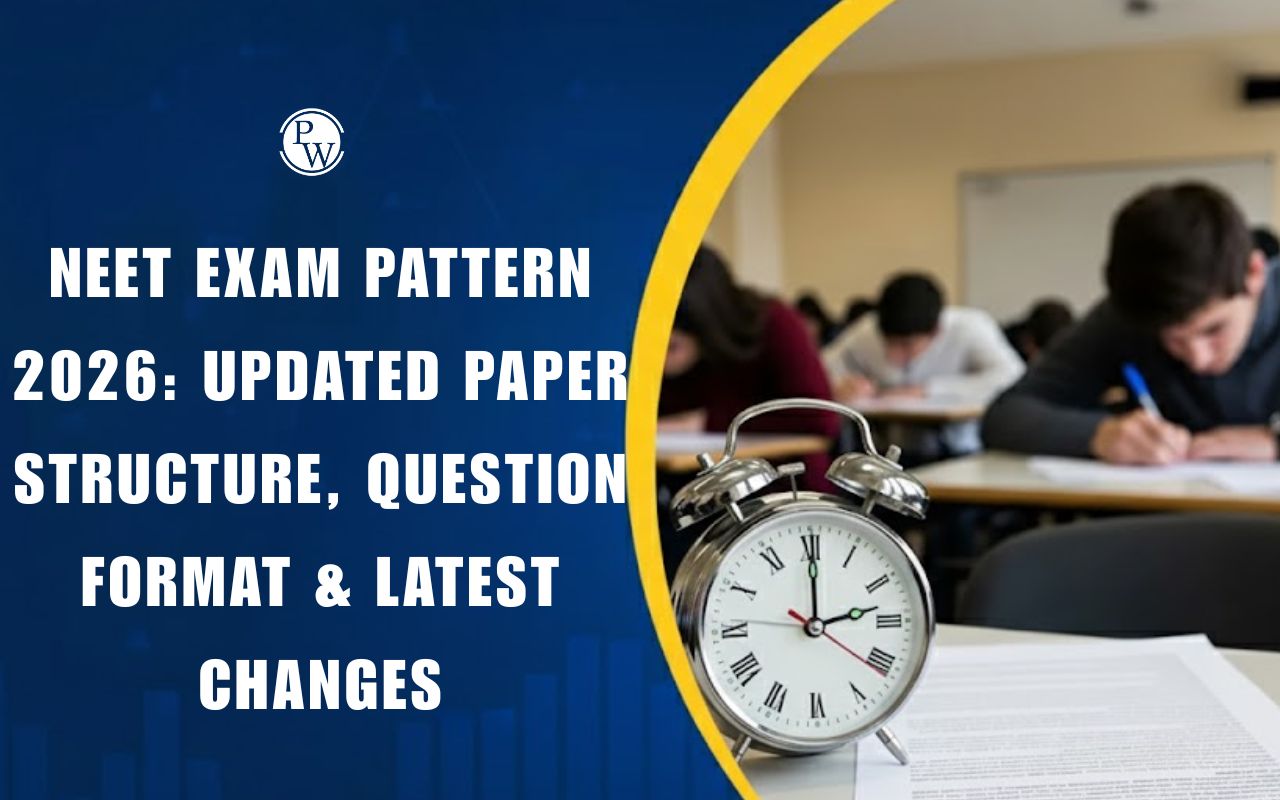
Chromosomal Basis of Inheritance MCQs: Chromosomal Basis of Inheritance is an important part of the NEET syllabus. It helps students understand how genes are passed from parents to children. The topic is from the unit Principles of Inheritance and Variation, which has a weightage of 10% in the NEET exam. One of the best ways to prepare for this chapter is by solving multiple choice questions (MCQs). Practicing MCQs helps students understand the concepts better and learn how to solve questions quickly in the exam.
Chromosomal Basis of Inheritance MCQs Overview
This chapter is based on the Chromosomal Theory of Inheritance. It explains how chromosomes carry genes, and how they follow Mendel’s laws. Students learn about sex determination, linkage, crossing over, and mutations. This helps them understand how traits are inherited. If students want to study in detail for better understanding, they can refer to the Principles of Inheritance and Variation NEET notes.
Download Last 5 Years NEET Previous Year Question Papers PDF
Free NEET PYQ PDF
Chromosomal Basis of Inheritance MCQs with Explanations
Below are some MCQs with answers and explanations. Each question tests understanding of the topic and helps in NEET exam preparation.
Q1. The types of phenotypes in the F₂ generation of Mendelian dihybrid cross are:
A. 4
B. 16
C. 8
D. 9
Answer: A. 4
Explanation: A dihybrid cross produces four phenotypes in F₂ generation based on the combination of two traits. These are round yellow, round green, wrinkled yellow, and wrinkled green.
Q2. In 1900, three biologists independently rediscovered Mendel's principles. They were:
A. De Vries, Correns and Tschermak
B. Sutton, Morgan and Tschermak
C. Walter Sutton, De Vries and Boveri
D. Boveri, Punnett and Tschermak
Answer: A. De Vries, Correns and Tschermak
Explanation: Mendel’s work was rediscovered in 1900 by De Vries, Correns, and Tschermak, who independently validated his laws of inheritance.
Q3. In sickle cell anemia, glutamic acid is replaced by valine. Which of the following triplet codes is for valine?
A. GGG
B. GAG
C. GAA
D. GUG
Answer: D. GUG
Explanation: A single base mutation changes GAG (glutamic acid) to GUG, coding for valine, which causes sickle-shaped RBCs in sickle cell anemia.
Q4. In human being, sex chromosomal complement is:
A. XX-XY
B. XX-XO
C. ZO-ZZ
D. ZW-ZZ
Answer: A. XX-XY
Explanation: Humans have XX sex chromosomes in females and XY in males, determining their biological sex.
Q5. If one parent belongs to 'A' blood group and the other to 'O' blood group, their children possibly represent:
A. A and B blood groups only
B. AB blood groups only
C. A and O blood groups only
D. All four types of blood groups
Answer: C. A and O blood groups only
Explanation: Parent with blood group A can be AO; parent with O is OO. The children can be AO (A) or OO (O).
Q6. Which one of the following is an example of polygenic inheritance?
A. Skin color in humans
B. Flower color in Mirabilis jalapa
C. Production of male honey bee
D. Pod shape in garden pea
Answer: A. Skin color in humans
Explanation: Skin color in humans is controlled by many genes, which is a typical example of polygenic inheritance.
Q7. A woman with 47 chromosomes due to 3 copies of chromosome 21 is characterized by:
A. Klinefelter's Syndrome
B. Triploidy
C. Turner's Syndrome
D. Down's Syndrome
Answer: D. Down's Syndrome
Explanation: Down’s Syndrome is caused by trisomy of chromosome 21, leading to 47 total chromosomes.
Q8. Haemophilia is more commonly seen in human males than in human females because:
A. a greater proportion of girls died in infancy
B. this disease is due to a Y-linked recessive mutation
C. this disease is due to an X-linked recessive mutation
D. this disease is due to an X-linked dominant mutation
Answer: C. this disease is due to an X-linked recessive mutation
Explanation: Males have only one X chromosome, so a single mutated gene causes the disease, making haemophilia more common in males.
Q9. If a person has one copy of each of two different alleles for a given gene, the person is for that trait.
A. heterozygous
B. homozygous
C. recessive
D. true-breeding
Answer: A. heterozygous
Explanation: A heterozygous person has two different alleles (e.g., Aa), carrying both dominant and recessive traits.
Q10. A cross between AaBB × aaBB yields a genotypic ratio of:
A. 1 AaBB : 1 aaBB
B. 1 AaBB : 3 aaBB
C. 3 AaBB : 1 aaBB
D. All AaBb
Answer: A. 1 AaBB : 1 aaBB
Explanation: When AaBB is crossed with aaBB, the offspring genotypes are in a 1:1 ratio of AaBB and aaBB.
Q11. Genotypic and phenotypic ratios of monohybrid cross in snapdragon plant are:
A. 3:1 and 1:2:1 respectively
B. 1:2:1 and 3:1 respectively
C. 1:2:1 and 1:2:1 respectively
D. 3:1 and 3:1 respectively
Answer: C. 1:2:1 and 1:2:1 respectively
Explanation: Snapdragon plants show incomplete dominance. The genotype and phenotype both follow a 1 red : 2 pink : 1 white ratio.
Q12. Which of the following statements are correct regarding phenylketonuria?
I. It is an autosomal recessive trait.
II. Enzyme phenylalanine hydroxylase is absent.
III. Mental retardation.
IV. Hair and skin pigmentation increases.
Choose the most appropriate answer:
A. I, II, III and IV
B. II, III and IV only
C. I, III and IV only
D. I, II and III only
Answer: D. I, II and III only
Explanation: Phenylketonuria is an autosomal recessive disorder where phenylalanine hydroxylase is missing. Pigmentation actually decreases.
Q13. Sickle cell anemia is:
A. caused when the phenylalanine is accumulated and converted into phenylpyruvic acid and other derivatives.
B. caused by a change in a single base pair of DNA.
C. characterized by elongated sickle-like RBCs with a nucleus.
D. an autosomal dominant trait.
Answer: B. caused by a change in a single base pair of DNA
Explanation: A single base mutation in the gene coding for hemoglobin causes the RBCs to become sickle-shaped in sickle cell anemia.
Q14. In α-thalassemia, the affected genes are present on chromosome number:
A. 11
B. 16
C. 10
D. 21
Answer: B. 16
Explanation: α-thalassemia is caused by mutations in genes on chromosome 16, which affect the production of α-globin chains in hemoglobin.
Q15. In a dihybrid cross, where the two parents differed in two pairs of contrasting traits: seed colour (yellow and green) and seed shape (round and wrinkled). How many seeds will have round and yellow phenotype in F₂ generation?
A. 4
B. 9
C. 16
D. 12
Answer: B. 9
Explanation: A dihybrid cross produces 9 round yellow seeds in the 9:3:3:1 phenotypic ratio of F₂ generation.
Prepare for NEET with PW Online NEET Coaching! Our courses offer structured lessons, clear explanations of concepts, and interactive classes to support your NEET preparation effectively
Chromosomal basis of Inheritance MCQs FAQs
Who called chromosomal theory of inheritance?
What are the different types of chromosomal inheritance?
What is the chromosomal theory of inheritance based on?
What is the full form of DNA?
What is an example of the chromosomal theory of inheritance?










